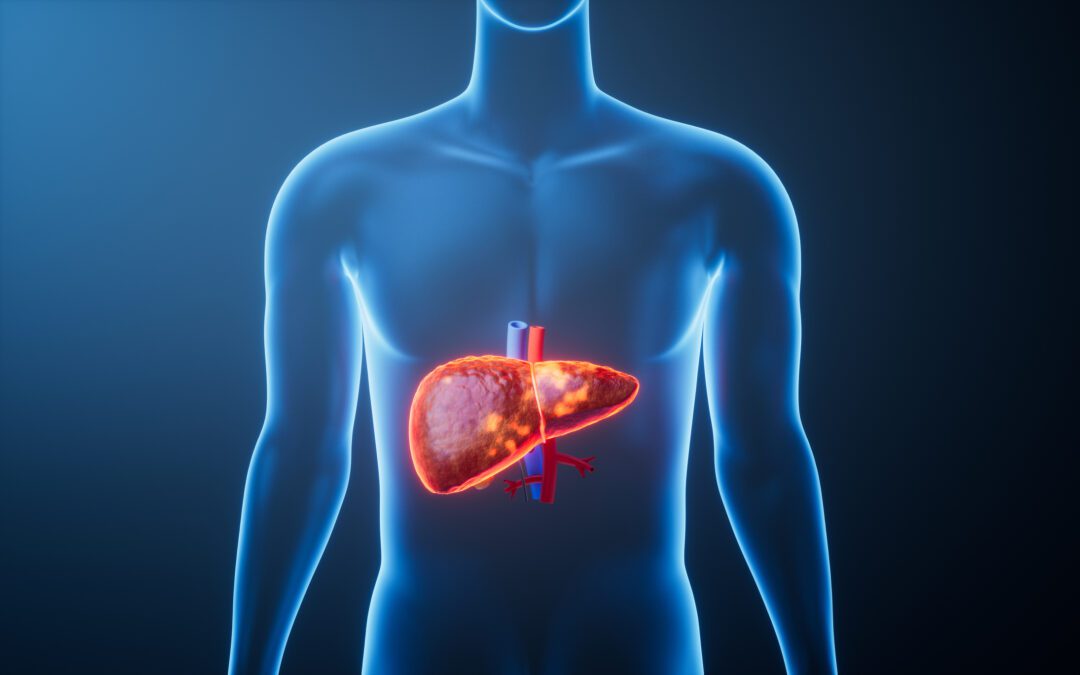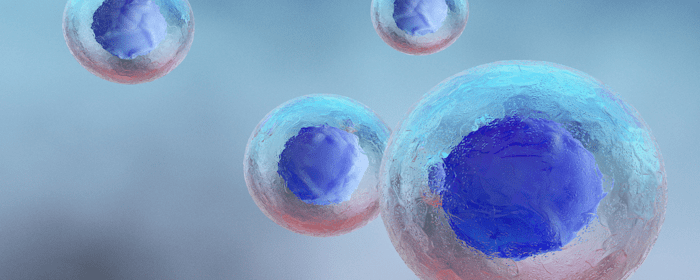
by admin | Feb 13, 2025 | Mesenchymal Stem Cells, Regenerative Medicine, Stem Cell Research, Stem Cell Therapy
Alcoholic liver disease (ALD) is a serious global health problem that arises from chronic or binge alcohol consumption. As a chronic liver disease, ALD occurs due to alcohol’s harmful effects on the liver, which is the first organ to metabolize alcohol. This process leads to the production of harmful byproducts that damage liver cells and cause oxidative stress. Over time, this damage triggers inflammation and fibrosis (scarring of the liver), eventually progressing to conditions such as steatosis (fatty liver), steatohepatitis (inflammation and fat accumulation), cirrhosis, and even hepatocellular carcinoma (HCC), a type of liver cancer.
Despite the growing need for effective treatment options, there are currently no FDA-approved therapies specifically for ALD. The only definitive treatments available are alcohol abstinence and liver transplantation, but these options are not always accessible or feasible for all patients. Given the limitations of current treatment options, there is a pressing need for new therapeutic strategies to combat ALD.
Challenges in Current Treatment Approaches
To date, the treatments for ALD primarily focus on managing the symptoms and delaying disease progression until a liver transplant is possible. These supportive therapies aim to reduce oxidative stress, regenerate liver cells, and control inflammation. However, they are not effective for many patients.
Various drugs have been investigated to target the underlying causes of ALD, such as oxidative stress and inflammation. Despite showing promise in preclinical studies, many of these therapies have failed to demonstrate significant benefits in clinical trials. The complexity of ALD and the fact that it often develops alongside other health issues, such as poor nutrition or hepatitis, make it difficult to find a one-size-fits-all solution.
Stem Cell Therapy: A Promising Option
In recent years, stem cell therapy has emerged as a potential treatment for ALD. Among the different types of stem cells, mesenchymal stem cells (MSCs) have shown the most promise due to their ability to regenerate damaged tissue and modulate immune responses. MSCs can be sourced from various tissues such as bone marrow, adipose tissue, and umbilical cord blood. Importantly, the use of MSCs is free from the ethical concerns associated with embryonic stem cells, making them a more attractive option for therapeutic research.
MSCs have been widely studied in the context of liver diseases, including ALD, and have shown positive results in preclinical and clinical trials. These stem cells work by reducing inflammation, promoting liver cell regeneration, and improving overall liver function. Moreover, MSCs secrete factors that contribute to their therapeutic effects. These factors, known as the secretome, contain cytokines, growth factors, and extracellular vesicles (EVs), which can mimic the healing properties of MSCs themselves.
Potential for Cell-Free Therapies
Given the challenges with direct stem cell transplantation, researchers are exploring cell-free approaches, which use the secretome and EVs derived from MSCs. These cell-free therapies could offer many of the same benefits as stem cell therapy without the risks associated with cell transplantation. For instance, the secretome contains anti-inflammatory molecules and other agents that can help regenerate damaged liver tissue, while EVs carry proteins and genetic material that help reduce liver damage.
Several preclinical studies have shown that MSC-derived secretomes and EVs can alleviate the symptoms of liver diseases similar to ALD by reducing oxidative stress and inflammation. However, more research is needed to determine the optimal methods for isolating and administering these factors in a clinical setting. One of the key obstacles is the difficulty in distinguishing between EVs and other natural components in the body, making it challenging to ensure that the right therapeutic agents are delivered to patients.
Current Research and Future Directions
Although MSC-based therapies are still in the early stages of development for ALD, the research to date has been encouraging. Studies in animal models have demonstrated that MSCs and their secreted factors can reduce inflammation, prevent fibrosis, and promote liver regeneration. For example, transplantation of MSCs has been shown to improve liver function in mice with alcohol-induced liver damage, while MSC-derived EVs have been found to enhance liver regeneration by promoting the growth of new liver cells.
Stem Cell Therapy: A Promising Future for Alcoholic Liver Disease
Alcoholic liver disease is a major global health issue, with alcohol consumption contributing to a range of liver disorders that can lead to severe and life-threatening conditions. While current treatment options are limited, advances in stem cell therapy, particularly the use of mesenchymal stem cells, offer new hope for treating ALD. MSCs and their secreted factors have shown potential to reduce liver damage, promote regeneration, and modulate the immune system, making them a promising therapeutic option for ALD.
However, despite the progress in preclinical studies, Han et al. highlight many challenges to overcome before these therapies can be widely adopted in clinical practice. Further research is needed to better understand how MSCs and their secretome work, and to develop safer, more effective treatments for ALD. In the meantime, addressing the root causes of ALD, such as excessive alcohol consumption, remains crucial to reducing the burden of this disease worldwide. With continued research and innovation, MSC-based therapies may one day offer a viable solution for patients suffering from this debilitating condition.
Source: Han J, Lee C, Hur J, Jung Y. Current Therapeutic Options and Potential of Mesenchymal Stem Cell Therapy for Alcoholic Liver Disease. Cells. 2023; 12(1):22. https://doi.org/10.3390/cells12010022

by admin | Feb 7, 2025 | Mesenchymal Stem Cells, Multiple Sclerosis, Stem Cell Research, Stem Cell Therapy
Progressive multiple sclerosis (PMS) is a complex, disabling form of multiple sclerosis characterized by the progressive accumulation of central nervous system (CNS) damage. This damage arises from chronic inflammation, demyelination, axonal injury, neuronal degeneration, and gliosis, affecting both white and gray matter in the brain and spinal cord. Despite advancements in MS research, effective reparative therapies for reversing the functional impairments associated with PMS remain largely unavailable.
A promising new approach for PMS treatment is NurOwn, a therapy based on mesenchymal stem cell-derived neurotrophic factor (MSC-NTF) cells. NurOwn utilizes a proprietary method to isolate and culture autologous (self-derived) mesenchymal stem cells (MSCs) from bone marrow. These MSCs are then differentiated to secrete high levels of neurotrophic factors (NTFs), which are believed to have both neuroprotective and immunomodulatory properties. Preclinical studies and early clinical trials have suggested that MSC-NTF therapy could help reduce CNS inflammation and promote neuronal repair mechanisms in PMS patients.
Cohen et al.’s open-label phase II study was conducted to evaluate safety/efficacy of three intrathecal cell treatments
Safety and Tolerability of MSC-NTF Therapy
In this Phase II clinical trial (BCT-101), the safety of MSC-NTF therapy was evaluated in 20 participants with PMS, of whom 18 received treatment. While most participants tolerated the therapy well, two discontinued due to adverse events related to the procedure, including mild symptoms such as coldness, muscle weakness, and fever, as well as one case of arachnoiditis -a rare inflammation of the arachnoid membrane surrounding the spinal cord.
For both affected individuals, MRI scans revealed characteristic lumbar nerve root clumping. Treatment with epidural cortisone and analgesics provided symptom relief, with one participant’s symptoms resolving fully. Importantly, there were no recorded deaths or adverse events associated with MS relapses, and no clinically significant alterations were observed in blood, urinalysis, or vital sign parameters after dosing.
According to the authors, these results highlight the potential tolerability of MSC-NTF therapy, though further studies are required to assess long-term safety.
Potential of MSC-NTF Therapy for PMS
NurOwn’s MSC-NTF cells have been tested in animal models relevant to PMS, including studies on autoimmune encephalomyelitis and optic nerve damage, which have shown the therapy’s potential to reduce inflammation and support neuroprotective mechanisms.
Current studies suggest that intrathecal (spinal) administration may offer unique benefits over intravenous administration by directly addressing meningeal inflammation and delivering neurotrophic factors close to the site of CNS damage. The capability of MSC-NTF cells to modulate inflammation and potentially promote endogenous repair makes it a promising therapeutic modality in PMS.
Functional and Biomarker Outcomes
Cohen et al.’s phase II study used several functional outcomes to assess MSC-NTF efficacy in PMS, including the timed 25-foot walk test (T25FW), nine-hole peg test (9-HPT), low-contrast letter acuity (LCLA), and symbol digit modalities test (SDMT).
Results indicated positive trends in these measures, suggesting that MSC-NTF therapy could improve mobility, hand function, and cognitive speed in PMS patients. Additionally, patient-reported outcomes, such as the MS Walking Scale-12 (MSWS-12), demonstrated improvements in walking function.
Biomarker analysis revealed reductions in cerebrospinal fluid (CSF) inflammatory markers, including MCP-1, sCD27, SDF-1, and osteopontin, indicating a decrease in CNS inflammation. Neuroprotective biomarkers, such as VEGF-A, HGF, NCAM1, and LIF, also showed consistent increases, suggesting that MSC-NTF cells might help support neuronal health and function in PMS. However, changes in neurodegenerative biomarkers, such as neurofilament light chain (NfL), were inconsistent, indicating the need for additional research to understand MSC-NTF’s impact on neuronal damage markers.
Insights and Future Directions Of MSC-NTF Therapy for PMS
This open-label, single-arm Phase II study demonstrated that MSC-NTF cells could be safely administered in participants with stable, non-relapsing PMS. Although two participants experienced arachnoiditis following intrathecal treatment, the majority tolerated the therapy well. Functional outcomes showed encouraging trends, suggesting possible benefits of MSC-NTF therapy in improving physical and cognitive function in PMS patients.
The study also highlighted several limitations, including the lack of a placebo-controlled group, which may introduce bias in interpreting efficacy results, and limitations in biomarker analysis due to sample timing. Additionally, inconsistent changes in neurodegenerative biomarkers and the small sample size warrant further investigation.
In summary, this Phase II trial provides preliminary evidence supporting the safety and potential therapeutic benefits of MSC-NTF cell therapy in PMS. While these initial findings are promising, larger placebo-controlled studies are needed to confirm efficacy and further elucidate the role of MSC-NTF cells in modulating CNS inflammation and promoting neuroprotection in PMS.
Source: Cohen JA, Lublin FD, Lock C, et al. Evaluation of neurotrophic factor secreting mesenchymal stem cells in progressive multiple sclerosis. Multiple Sclerosis Journal. 2023;29(1):92-106. doi:10.1177/13524585221122156

by admin | Jan 31, 2025 | Athletic Injury, Degenerative Disc Disease, Mesenchymal Stem Cells, Stem Cell Research, Stem Cell Therapy
Back pain is the most common cause of disability worldwide, impacting people of all ages and socioeconomic backgrounds. In North America, it is one of the top reasons people miss work and visit doctors. Studies show that at least 80% of Americans will experience low back pain at some point in their lives, making it a major contributor to healthcare costs and lost income, amounting to over $50 billion each year. Although various factors can cause back pain, most cases are mechanical rather than due to an underlying disease. One of the main sources of chronic back pain is the degeneration of intervertebral discs, which can lead to pain in the lower back and neck. Despite its prevalence, there is no standard treatment that effectively restores the normal function of these degenerated discs.
Understanding Disc Degeneration and Back Pain
Degenerative disc disease is one of the most significant contributors to chronic low back pain. As intervertebral discs age or become damaged, they lose their ability to cushion the spine, causing pain and reduced mobility. Degeneration can occur naturally due to aging, but other factors like injury or genetic predisposition can also accelerate the process. While imaging tests such as MRIs can identify disc degeneration, they don’t always pinpoint the exact cause of the pain. This makes treating degenerative disc disease challenging, as doctors struggle to find therapies that not only alleviate pain but also restore disc health.
Emerging Stem Cell Therapies for Back Pain
Recently, regenerative medicine, particularly stem cell therapy, has gained attention as a potential treatment for degenerative disc disease. Stem cells have the ability to transform into different types of cells, making them suitable for repairing damaged tissues. In theory, injecting stem cells into degenerated discs could help regenerate disc tissue and reduce pain.
Overview of Clinical Studies
Several clinical studies have examined the potential of stem cell therapies for treating degenerative disc disease, with mixed results. The types of stem cells studied include:
- Autologous mesenchymal stem cells (MSCs): These are derived from a patient’s own body, often from bone marrow or fat tissue. Some studies reported a reduction in pain and improvement in quality of life following treatment with MSCs. However, results were inconsistent, and improvements did not always correspond to measurable changes in the disc’s structure.
- Allogenic stem cells: These are stem cells from donors’ umbilical cord tissue. Research on allogenic stem cells is still limited, with few studies showing significant long-term benefits.
- Chondrocytes: These cells, which produce cartilage, have also been used in some studies to promote disc regeneration. However, there is limited evidence supporting their use, and more research is needed.
Overall, the studies reviewed had varying degrees of success, with some patients experiencing significant pain relief and others seeing little to no improvement. Many studies lacked control groups or were not randomized, making it difficult to draw definitive conclusions. The most common outcomes measured were pain scores and functional improvements, but there was no clear evidence that stem cell therapy restored the physical structure of degenerated discs.
How Stem Cells Might Work
There are several theories about how stem cells could help regenerate damaged discs. One possibility is that stem cells differentiate into the type of cells needed to repair the disc, such as cells that produce cartilage or other supportive tissues. Another theory is that stem cells create a supportive environment that encourages the body’s own repair mechanisms. For example, animal studies have shown that stem cells can increase the production of molecules that help repair and strengthen disc tissue.
The Future of Stem Cell Therapy for Back Pain
Soufi et al. report that stem cell therapy remains a promising area of research for treating degenerative disc disease. Ongoing clinical trials aim to establish the safety and effectiveness of these treatments in humans, and if successful, could pave the way for a new approach to managing chronic back pain. For stem cell therapy to become a standard treatment, more studies are needed to identify which patients are most likely to benefit and to optimize treatment protocols, including the type and dosage of stem cells.
Researchers are also exploring the use of tissue-engineering technologies and biomaterials to enhance the effectiveness of stem cell therapies. Combining stem cells with supportive scaffolds could improve the chances of successful disc regeneration and provide a more stable environment for cell growth.
The Potential of Stem Cell Therapy for Degenerative Disc Disease and Back Pain
Back pain, particularly when related to degenerative disc disease, is a significant health issue with limited effective treatment options. Stem cell therapy represents a new frontier in regenerative medicine, with the potential to offer relief to patients who have not responded to traditional therapies.
Source: Soufi, K.H.; Castillo, J.A.; Rogdriguez, F.Y.; DeMesa, C.J.; Ebinu, J.O. Potential Role for Stem Cell Regenerative Therapy as a Treatment for Degenerative Disc Disease and Low Back Pain: A Systematic Review. Int. J. Mol. Sci. 2023, 24, 8893. https://doi.org/10.3390/ijms24108893

by admin | Jan 24, 2025 | Autoimmune, Mesenchymal Stem Cells, Stem Cell Research, Stem Cell Therapy
The onset of autoimmune diseases is related to unbalanced immune homeostasis and leads to the injury and failure of several organ specific tissues. Currently estimated to affect 8-10% of the population, these autoimmune diseases are associated with serious impairment, high mortality rate, and significant medical costs.
The discovery of stem cells, and specifically mesenchymal stem cells (MSCs), has created new opportunities for accelerating tissue regeneration. MSCs possess the ability to self-renew and differentiate into a wide range of cell types that fill a critical role in immunomodulation and regenerative therapy.
In this review, Jasim et al. share the latest research on the efficiency and feasibility of MSCs in the clinical treatment of several autoimmune disorders including rheumatoid arthritis, type 1 diabetes, multiple sclerosis, systemic lupus erythematosus, inflammatory bowel disease, liver disease, and Sjogren’s syndrome.
To date, most of these autoimmune disorders have been treated with a number of conventional drugs, including non-steroidal anti-inflammatory drugs. However, with many of these conditions, these drugs have been observed to contribute to liver injury, gastrointestinal injury, kidney side effects, BM suppression, and psychological disorders, making the development of new and safe therapeutic approaches an important issue. This has led to significant interest in exploring the potential benefits of MSC therapy in treating autoimmune diseases.
MSCs are easily collected from a variety of sources, including umbilical cord (UC), Wharton’s jelly (WJ), adipose tissue, bone marrow (BM), teeth and menstrual fluid. Research has demonstrated that MSCs regulate their local environment, cellular communications, and the release of several factors. MSCs are also able to migrate and differentiate into damaged tissue and can release growth factors, cytokines, and chemokines, which assists in improving tissue regeneration.
The research evaluated by the authors as part of this review, coupled with MSC’s high proliferation ability, multipotent differentiation capacity, anti-inflammatory and immunomodulatory properties, and regenerative potential, led to the conclusion that there was no remarkable association between mesenchymal stem cell therapy (MSCT) and tumor and infection with the treatment determined to be safe and feasible.
Jasim et al. also concluded that there is still a lack of understanding of the specific mechanisms through which the MSCT ameliorates these various autoimmune diseases that must be addressed as a way to enhance the future clinical use of MSCs.
Source: Jasim SA, Yumashev AV, Abdelbasset WK, et al. Shining the light on clinical application of mesenchymal stem cell therapy in autoimmune diseases. Stem Cell Res Ther. 2022;13(1):101. Published 2022 Mar 7. doi:10.1186/s13287-022-02782-7

by admin | Jan 17, 2025 | Chondrocyte, Mesenchymal Stem Cells, Osteoarthritis, Stem Cell Research, Stem Cell Therapy
Osteoarthritis (OA) continues to be the most common form of degenerative joint disease in the United States and around the world.
According to the World Health Organization (WHO), 528 million people worldwide were living with osteoarthritis (OA) in 2019, which is an increase of 113% since 1990. The Global Burden of Disease Study 2021 found that 595 million people had OA in 2020, which is 7.6% of the global population. The Centers for Disease Control and Prevention (CDC) estimates that over 32.5 million adults in the U.S. currently live with OA.
Despite the tremendous increase in the global incidence of OA, there are no effective pharmaceutical therapies that are able to restore the original structure and function of damaged articular cartilage.
Considering this, cell-based therapies for OA and other orthopedic disorders have become a primary area of current research and development.
In this review, Mobasheri et al. focus on the structure and function of articular cartilage, the pathogenesis of OA, and explore the challenges associated with cartilage repair and regeneration using cell-based therapies that utilize chondrocytes and mesenchymal stem cells (MSCs).
Articular cartilage (AC) has demonstrated a very poor ability to repair and regenerate. Being largely avascular and containing no blood vessels, AC lacks the blood flow required in the biological repair response process.
Overtime, and with age, cartilage loses its already limited capacity for repair and damaged cartilage is typically replaced by fibrocartilage-like scar tissue. With no successful surgical technique demonstrating success in stimulating AC repair and regeneration, autologous chondrocyte implantation (ACI) has emerged as one of the most widely used cell-based repair strategies for articular cartilage. Performed on over 12,000 patients worldwide, ACI has encouraged the growth of durable cartilage-like tissue and demonstrated the ability to significantly reduce pain in patients.
Recent studies have also demonstrated that the immunomodulatory properties of MSCs are able to be exploited for the treatment of many inflammatory and rheumatic conditions, including OA. Specifically, the ability of MSCs to migrate to the site of an injury, induce peripheral tolerance, and inhibit the release of pro-inflammatory cytokines has been observed to promote tissue repair and the survival of damaged cells.
Considering these advances, Mobasheri et al. report that tissue engineering with chondrocytes and MSCs is now considered to be a promising way of repairing articular cartilage lesions. While there is significant evidence of the potential of these cell-based therapeutic treatment options, the authors also point out fundamental weaknesses associated with the models available to date.
Included among these weaknesses is the fact that none of the engineered tissue currently available possess the normal zonal organization of chondrocytes observed in vitro and considered to be the prerequisite for normal cartilage function and for the success of any future clinical application.
While there are still weaknesses associated with tissue utilizing engineering and cell-based therapies to repair cartilage in OA and other orthopedic conditions that require further research, the authors conclude that these emerging therapeutic options hold tremendous promise for managing OA in the future.
Source: Ali Mobasheri, Gauthaman Kalamegam, Giuseppe Musumeci, Mark E. Batt,
Chondrocyte and mesenchymal stem cell-based therapies for cartilage repair in osteoarthritis and related orthopaedic conditions, Maturitas,Volume 78, Issue 3, 2014, Pages 188-198, ISSN 0378-5122.

by admin | Jan 10, 2025 | Mesenchymal Stem Cells, Orthopedic Injuries, Osteoarthritis, Regenerative Medicine, Stem Cell Research, Stem Cell Therapy
Osteoarthritis (OA) is a prevalent and disabling joint condition that imposes significant health and economic burdens globally. Between 2006 and 2016, the global percentage change in years lived with disability due to OA increased by 31.5%. Knee osteoarthritis (KOA) is the most common form, primarily affecting older adults and those who are obese. Symptoms of KOA include pain, swelling, stiffness, and decreased mobility. KOA’s development involves more than just mechanical wear and tear. It is influenced by genetic and environmental factors, leading to the breakdown of articular cartilage, inflammation, and changes in the underlying bone.
Pathogenesis of KOA
The deterioration in KOA is complex. It begins with mechanical stress and progresses through a cascade of biological processes. Key players in cartilage maintenance are chondrocytes and the extracellular matrix (ECM). Chondrocytes, although only 2% of cartilage volume, are crucial and respond to inflammatory signals that disrupt the balance between ECM production and degradation, limiting cartilage regeneration.
Traditional treatments for KOA are primarily focused on pain management and symptomatic relief, with limited success in regenerating damaged cartilage.
Emerging Cell-Based Therapies For KOA
Mesenchymal Stromal Cells (MSCs) and Exosomes
Recent advances in cell-based therapy for KOA involve mesenchymal stromal cells (MSCs) and their secreted exosomes. MSCs are multipotent cells found in various tissues, including bone marrow, adipose tissue, and synovial fluid. They have the ability to differentiate into multiple cell types, including chondrocytes, and secrete exosomes that carry bioactive molecules.
MSC Selection and Preparation
MSCs can be derived from different sources, including bone marrow, adipose tissue, and umbilical cord tissue. Each source has unique properties and benefits. For instance, bone marrow-derived MSCs (BM-MSCs) are commonly used due to their extensive research background, while adipose tissue-derived MSCs (AT-MSCs) also show promising results.
Exosomes, extracellular vesicles released by MSCs, play a vital role in cell communication. They transfer lipids, nucleic acids, and proteins that can modulate cell behavior and promote cartilage repair.
Mechanisms of MSC-Based Therapy
Effects on Chondrocytes
MSC therapy promotes chondrocyte health by increasing chondrogenesis, improving cell proliferation, reducing apoptosis, and maintaining autophagy. MSCs stimulate chondrocyte activity through growth factors, enhancing their ability to regenerate cartilage. Studies show that MSCs and their exosomes can improve chondrocyte proliferation and reduce apoptosis, helping maintain cartilage integrity.
Impact on the ECM
Regulating the ECM’s balance between synthesis and breakdown is crucial for treating KOA. MSCs influence this balance by modulating matrix metalloproteinases (MMPs) and their inhibitors, tissue inhibitors of MMPs (TIMPs). For example, BM-MSCs can adjust the ratio of MMP-13 to TIMP-1, improving cartilage matrix composition.
Influence on Inflammation
Inflammation is a significant factor in KOA. MSCs and their exosomes can reduce pro-inflammatory cytokines (e.g., IL-1β, TNF-α) and enhance anti-inflammatory responses. This reduction in inflammation helps alleviate cartilage damage and improve joint function.
Immunomodulation
MSCs can modulate immune responses by influencing macrophage polarization. They can shift macrophages from a pro-inflammatory (M1) to an anti-inflammatory (M2) state, which helps reduce inflammation and promote tissue repair.
Mitochondrial Function
MSCs can also enhance mitochondrial function in chondrocytes. Mitochondrial transfer from MSCs to chondrocytes improves their energy production and reduces oxidative stress, which is crucial for maintaining cell function and delaying the progression of OA.
Paracrine Effects
The paracrine effects of MSCs, particularly through exosomes, involve the transfer of molecular signals to nearby cells. This signaling can promote cartilage repair and modulate inflammation and cell survival.
Overcoming Obstacles and Refining MSC Therapies for Better Outcomes
While MSC-based therapies show promise, there is a lack of standardized protocols for cell selection and preparation. Additionally, the exact mechanisms through which MSCs and exosomes exert their effects are still being studied. Xiang et al. call for further research to establish standardized methods and fully understand how these therapies work.
External physical conditions, such as hypoxia and magnetic fields, can affect MSC behavior and cartilage regeneration. Hypoxic conditions have been shown to enhance chondrogenesis, while magnetic fields can boost MSC differentiation and cartilage repair. Understanding these effects can improve treatment strategies.
Promising Advances in Cell-Based Therapies for Osteoarthritis Management
Osteoarthritis, particularly knee osteoarthritis, represents a major challenge due to its complex pathogenesis and significant impact on quality of life. Traditional treatments offer limited solutions for cartilage regeneration. However, advances in cell-based therapies, including MSCs and their exosomes, provide promising alternatives. These therapies work through various mechanisms, including enhancing chondrocyte function, modulating inflammation, and improving ECM balance. The authors conclude that ongoing research and standardization efforts will be crucial in optimizing these treatments and addressing the unmet needs in osteoarthritis management.
Source: Xiang, XN., Zhu, SY., He, HC. et al. Mesenchymal stromal cell-based therapy for cartilage regeneration in knee osteoarthritis. Stem Cell Res Ther 13, 14 (2022). https://doi.org/10.1186/s13287-021-02689-9







 St. Petersburg, Florida
St. Petersburg, Florida
